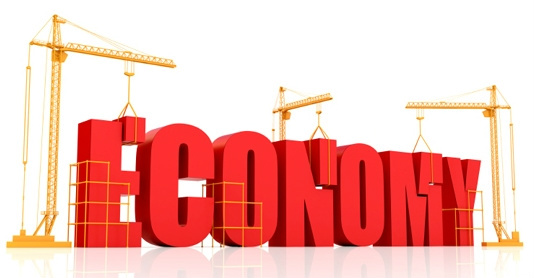
New Measures to Boost Domestic Production

 Higher customs duties will be imposed on disassembled items, such as an automobile, bicycle, or furniture, that have more imported components and parts in their final product.
Higher customs duties will be imposed on disassembled items, such as an automobile, bicycle, or furniture, that have more imported components and parts in their final product.
The Ministry of Industries, Mining and Trade has submitted a list of 800 commodities to the government for imposing an import ban or levying higher import tariffs.
Mehr News Agency also quoted Industries Minister Mohammad Reza Nematzadeh as saying that the move is aimed at boosting local production and giving advantage to domestic producers.
The Islamic Republic of Iran Customs Administration has released a statement saying that tariffs for importing completely knocked down kits will be set based on the customs value of the parts manufactured locally.
Higher customs duties will be imposed on disassembled items, such as an automobile, bicycle, or furniture, that have more imported components and parts in their final product, IRNA reported.
Leader of the Islamic Revolution Ayatollah Seyyed Ali Khamenei has named the new Iranian year (started on March 21) after “Resistance Economy: Production and Employment” as he called on government officials to direct their efforts on two crucial tasks of improving domestic production and increasing employment to achieve the goals of Resistance Economy.
Resistance Economy embodies a set of principles aimed at curbing dependence on oil export revenues, improving productivity and reducing the government’s role in the economy to make the country immune to economic wars waged by foreign powers.
It was first proposed by the Leader in 2011, amid the tightening of economic sanctions against Tehran by the US and its allies, including measures to limit Iran’s oil exports under the pretext that Tehran intends to build nuclear weapons.
The government allocated 160 trillion rials ($4.2 billion) this year to support struggling small- and medium-sized enterprises to stimulate the industrial sector. It plans to allocate the same amount in the course of the current Iranian year.
Latest reports show 156.8 trillion rials ($4.1 billion) had been granted to 22,893 SMEs in the 11 months to February 18, 2017.
Most of the loans were given to SMEs in Mazandaran Province (987 businesses), Isfahan Province (965 businesses) and Gilan Province (768 businesses).
By definition, enterprises run by under 50 workers and under 100 workers are considered small- and medium-sized respectively, according to Iran’s Small Industries and Industrial Parks Organization.
Some 96% of all licensed Iranian businesses are considered small- and medium-sized. About 88,000 manufacturing units are active in 992 industrial parks across Iran, accounting for 42% of all employment in the industrial sector.
Manufacturing has been in recession as a result of sanctions imposed on the economy over Iran’s nuclear program, among other reasons. Economic restrictions blocked Iran’s access to technologies, machinery and raw materials, thereby increasing costs and reducing demand.
The sanctions were coupled with a sharp fall in the price of oil, Iran’s main source of revenues, in 2014. As a result, the government failed to provide financial support to cash-strapped industries to help them emerge from recession.
That seems to have changed recently, slowly but steadily, as Iran managed to have the sanctions lifted in January 2016, as part of a nuclear deal it clinched with world powers earlier in 2015, in return for limiting the scope of its nuclear works. This paved the way for an inflow of foreign investment.
In January, Deputy Minister of Industries, Mining and Trade Reza Rahmani said more than 20,000 industrial units have emerged from recession since the beginning of the current Iranian year (March 20, 2016).
The industrial sector was the main driver of economic growth during the three quarters of the current Iranian year (started March 20, 2016).
Details of Iran's GDP growth during the period released by the Statistical Center of Iran shows the industrial sector grew by 10.5%.
The Central Bank of Iran says the Iranian economy grew 11.9% during the three quarters, putting the industrial growth at 5.8%.


Trump weighs using $2 billion in CHIPS Act funding for critical minerals

Codelco cuts 2025 copper forecast after El Teniente mine collapse

Electra converts debt, launches $30M raise to jumpstart stalled cobalt refinery

Barrick’s Reko Diq in line for $410M ADB backing

Abcourt readies Sleeping Giant mill to pour first gold since 2014

Nevada army depot to serve as base for first US strategic minerals stockpile

SQM boosts lithium supply plans as prices flick higher

Viridis unveils 200Mt initial reserve for Brazil rare earth project

Tailings could meet much of US critical mineral demand – study

Kyrgyzstan kicks off underground gold mining at Kumtor

Kyrgyzstan kicks off underground gold mining at Kumtor

KoBold Metals granted lithium exploration rights in Congo

Freeport Indonesia to wrap up Gresik plant repairs by early September

Energy Fuels soars on Vulcan Elements partnership

Northern Dynasty sticks to proposal in battle to lift Pebble mine veto

Giustra-backed mining firm teams up with informal miners in Colombia

Critical Metals signs agreement to supply rare earth to US government-funded facility

China extends rare earth controls to imported material

Galan Lithium proceeds with $13M financing for Argentina project

Kyrgyzstan kicks off underground gold mining at Kumtor

Freeport Indonesia to wrap up Gresik plant repairs by early September

Energy Fuels soars on Vulcan Elements partnership

Northern Dynasty sticks to proposal in battle to lift Pebble mine veto

Giustra-backed mining firm teams up with informal miners in Colombia

Critical Metals signs agreement to supply rare earth to US government-funded facility

China extends rare earth controls to imported material

Galan Lithium proceeds with $13M financing for Argentina project

Silver price touches $39 as market weighs rate cut outlook

















